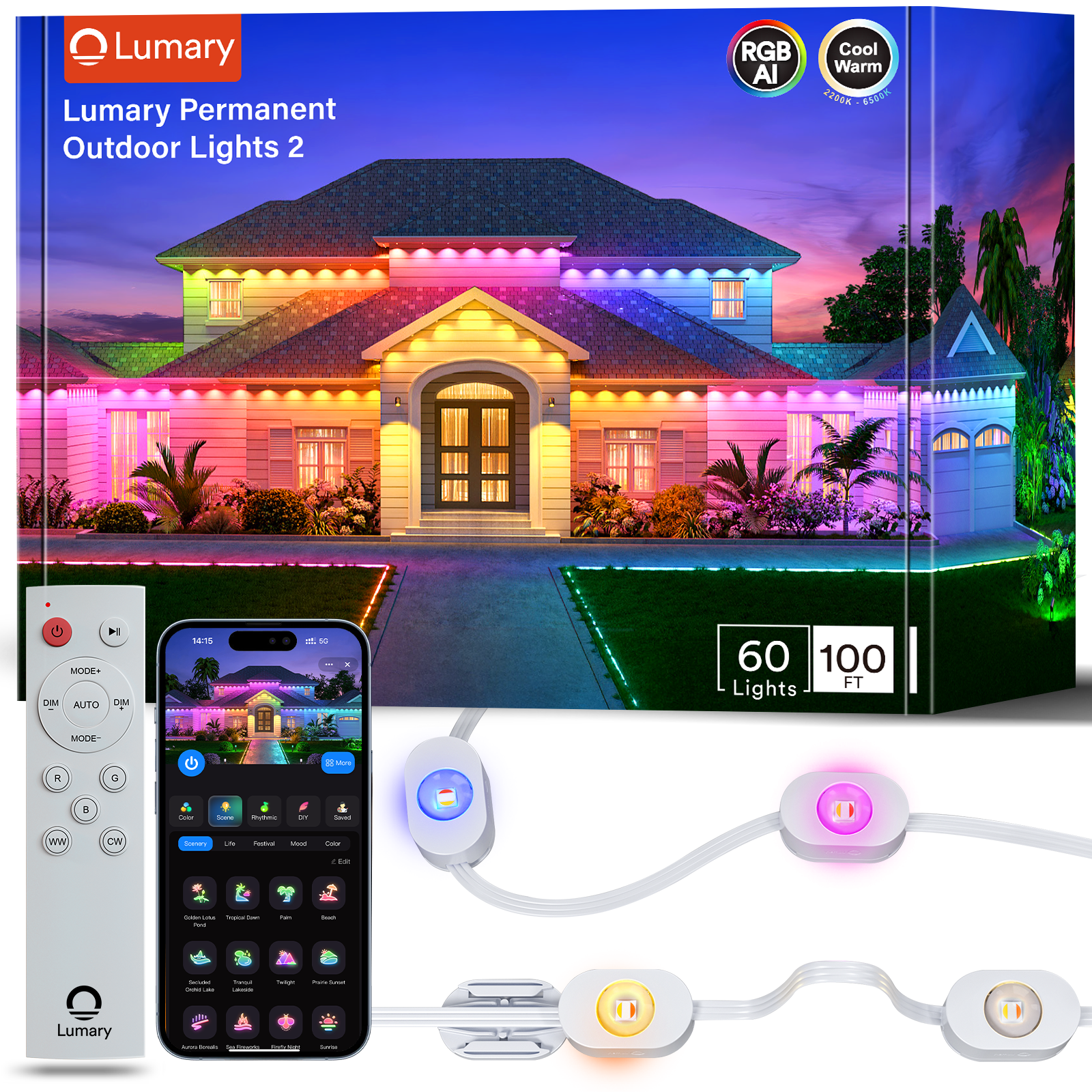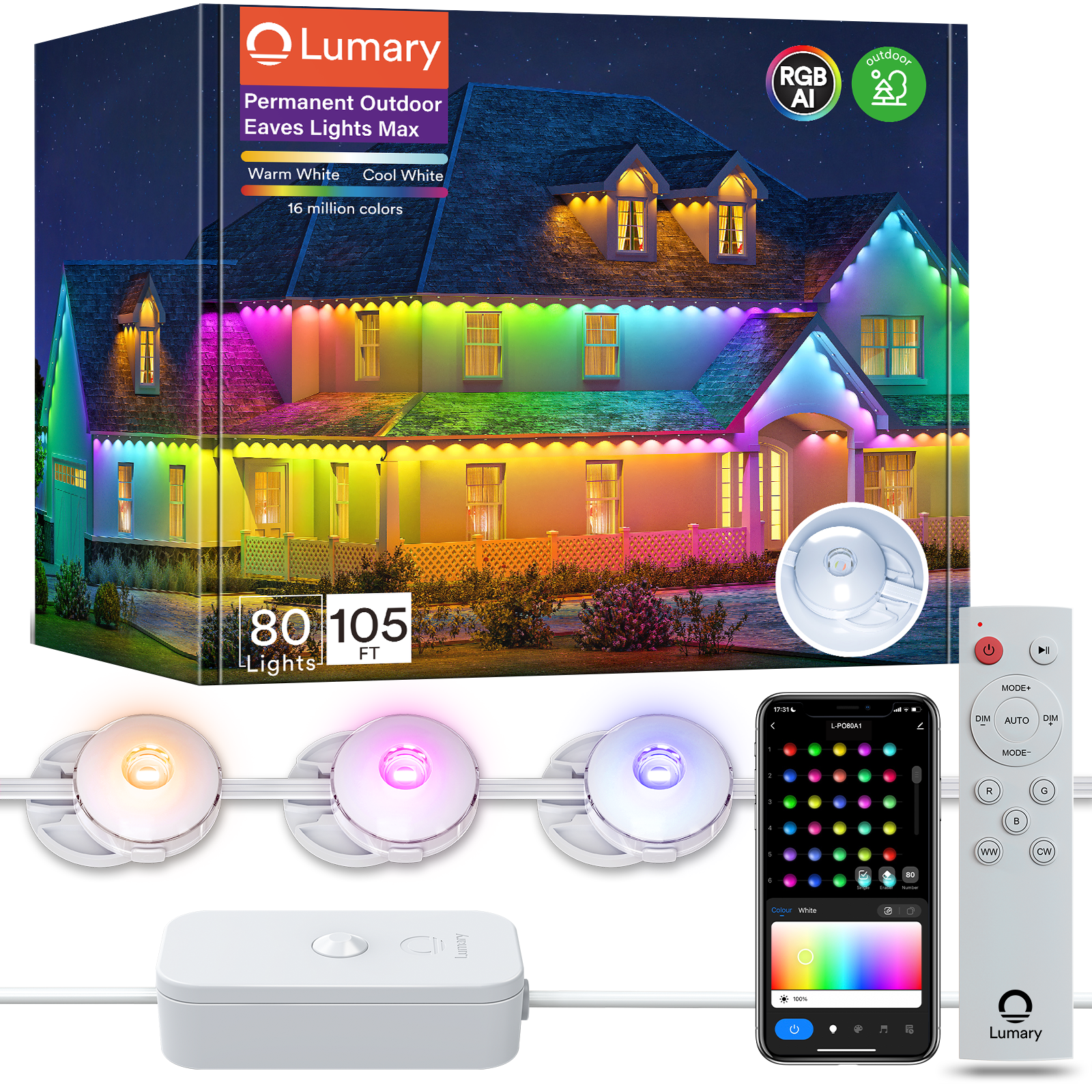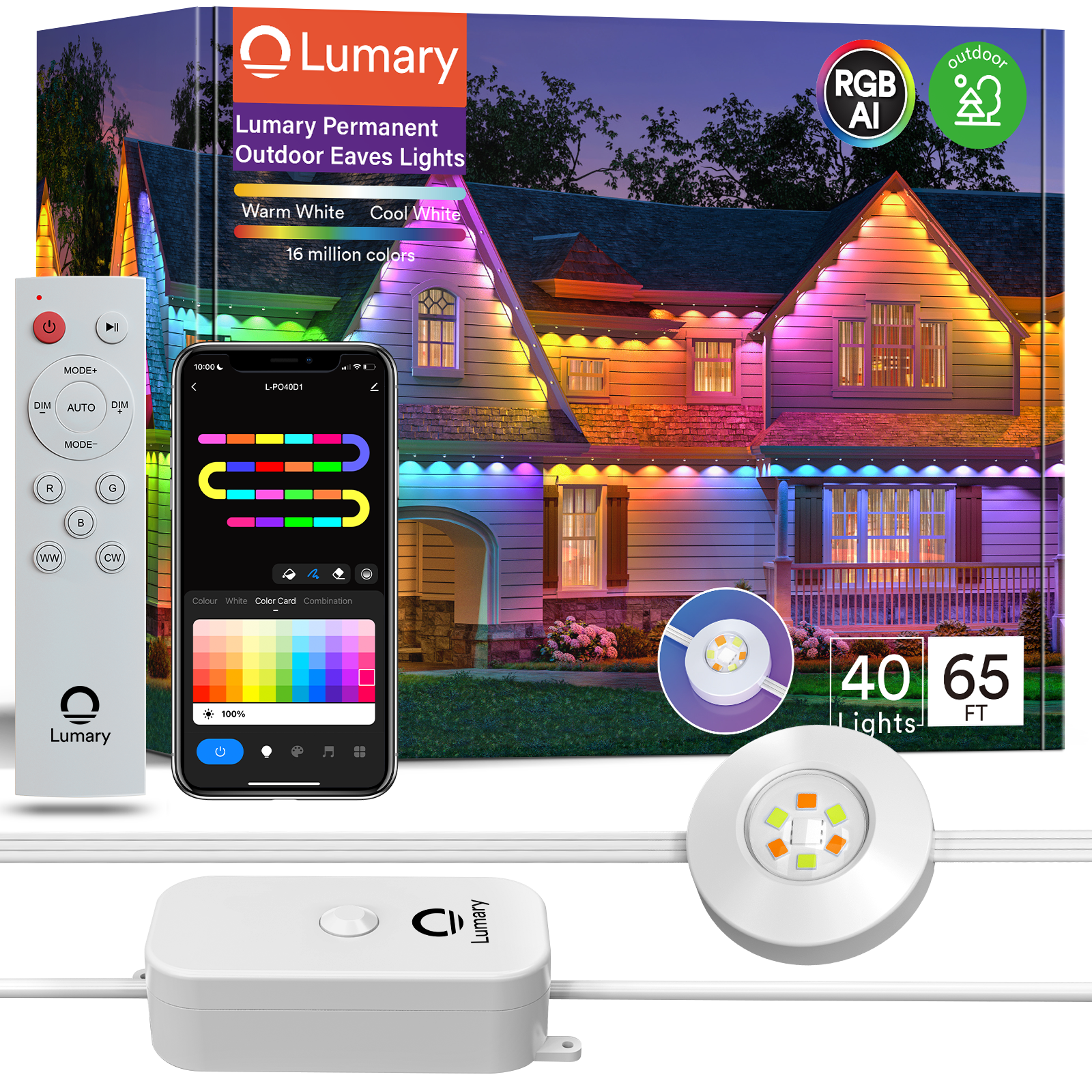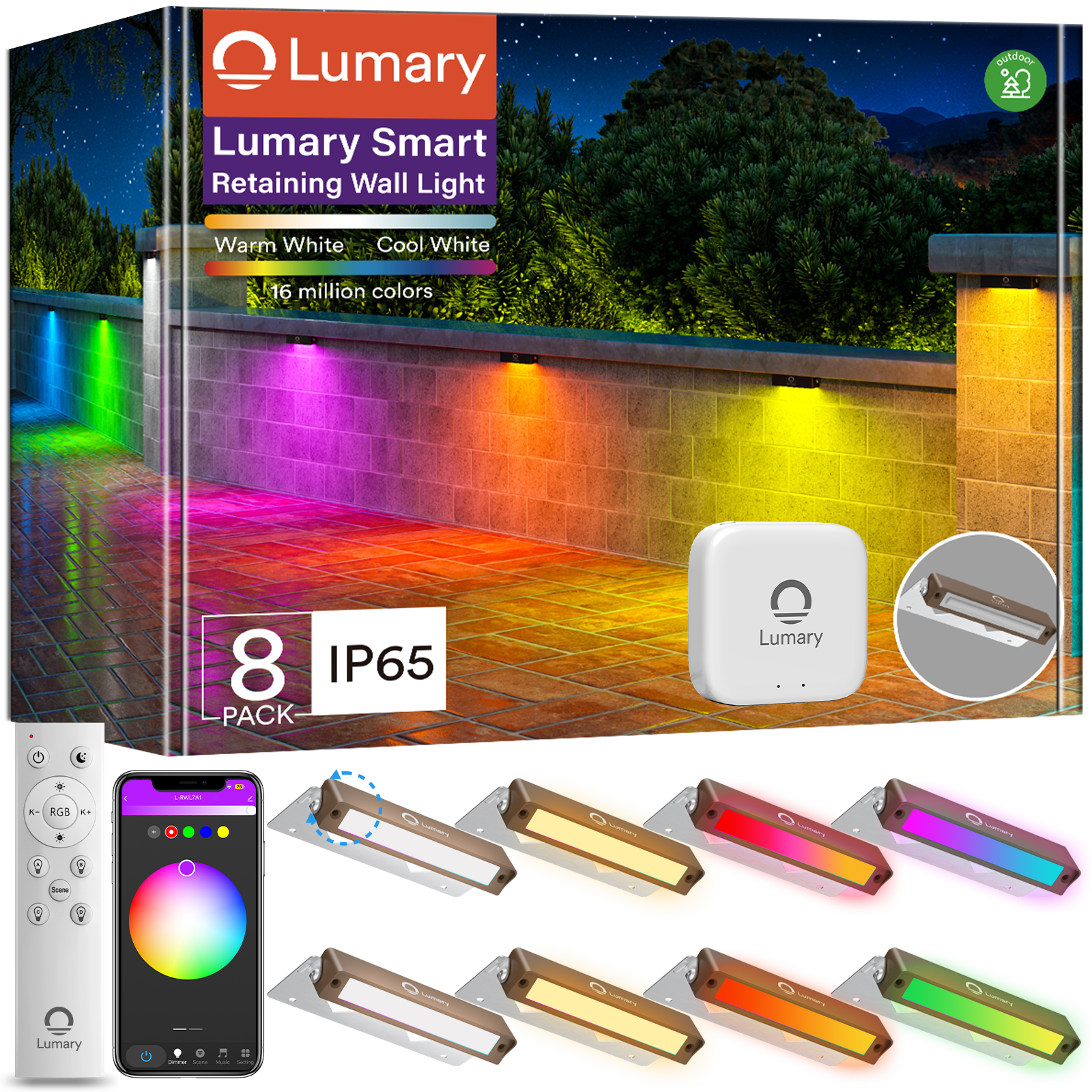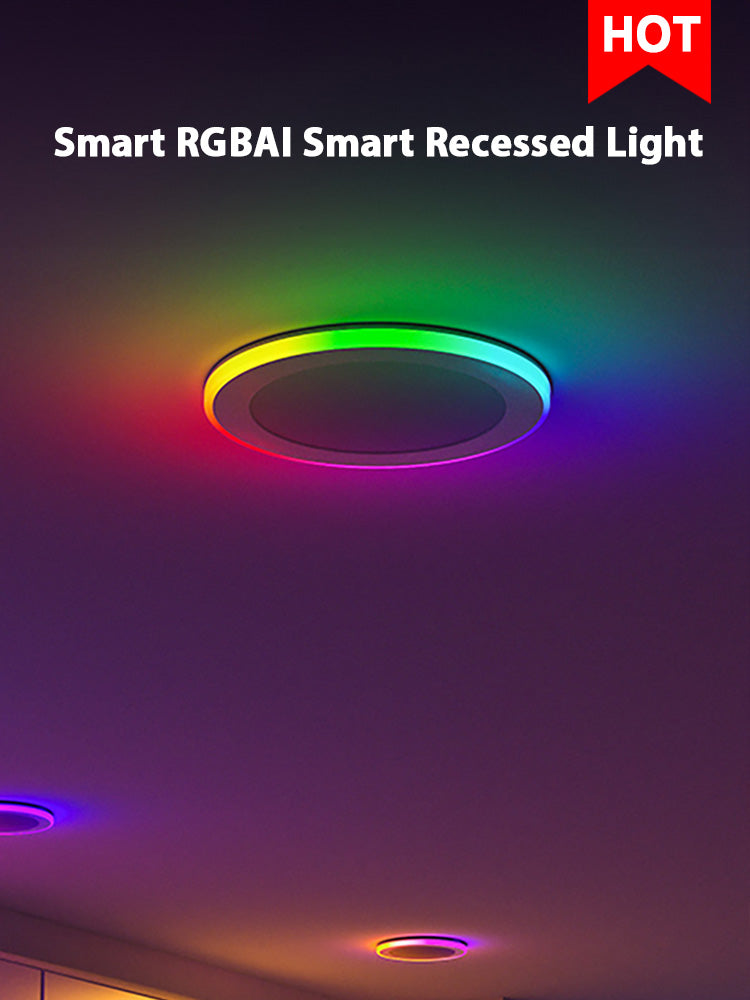Riding the wave of smart technology and IoT devices, lighting for home has come a long way in recent years. Smart lighting gives homeowners more control and customization over their lighting, both indoors and outdoors. However, smart indoor is different from smart outdoor lighting in many ways. In this blog post, we'll explore the differences between smart indoor and outdoor lighting when it comes to design, features, installation, and costs.

Indoor vs. Outdoor Lighting: Design
Indoor smart lights are designed for interior spaces like living rooms, kitchens, hallways, and bedrooms. Indoor lighting is typically more focused on accentuating decor, adjusting mood lighting, and customizing colors. Smart bulbs, recessed lighting, under cabinet lighting, and LED strip lights are common for indoor use. These lights are designed to be subtle but impactful. Soft white lighting is common for bedrooms and living spaces, while bolder colors can be used in kitchens, bathrooms, or accent walls. Smart technology allows homeowners to control brightness, color temperature, and schedules through an app or voice control.
Outdoor lighting serves more functional purposes like highlighting pathways, entryways, patios, and other exterior spaces. The design focuses heavily on security, visibility, durability, and weather resistance. Popular outdoor lighting includes pathway lighting, step lights, spotlights, flood lights, and post lights. These are designed to withstand weather elements and illuminate large areas. The lighting is typically brighter and harsher than indoor lighting. But smart technology can allow adjustments to color temperature and brightness to set the perfect ambiance for your outdoor space.
Indoor vs. Outdoor Lighting: Smart Features
Indoor and outdoor smart lighting boast many of the same features through app and voice control. Homeowners can create lighting groups, automation, schedules, and scenes for any area. For example, create a "movie scene" to dim your living room lights. Or set your exterior lights to turn on automatically at sunset. Smart lighting also integrates with home assistants like Alexa, Google Assistant, and Siri for voice control capabilities.

But outdoor lighting often includes additional features tailored for exterior use. Motion sensors will trigger pathway lights or flood lights when movement is detected. Photocells turn lights on and off based on ambient light levels. Timer controls allow lighting to stay on for set amounts of time. These automated features enhance security and convenience for outdoor spaces.
Indoor vs. Outdoor Lighting: Installation and Hardware
Installing smart lighting fixtures and wiring is usually more complex for outdoor spaces. Indoor lights can simply screw into an existing fixture or outlet in most cases. But outdoors requires more permanent and weatherproof installations. Hardwiring by an electrician is typical for pathway lighting, spotlights, post-lighting, and other permanent fixtures. Professional installation ensures lighting and wiring adheres to electrical codes for outdoor use.
Smart bulbs can also be used in existing outdoor fixtures. However, these fixtures should be enclosed and rated for outdoor use. Furthermore, smart bulbs rely on WiFi range, which may be limited outdoors. Extenders or repeaters may be necessary for a strong connection. Overall, professional installation is highly recommended for any permanent outdoor lighting.
For indoor spaces, smart bulbs are extremely convenient and minimally invasive. No rewiring is necessary – simply screw bulbs into your existing fixtures and connect them to WiFi and your smart home app. Peel-and-stick LED strip lights also require no wiring and can easily adhere to surfaces for accent lighting. Smart switches can be installed as a one-for-one swap with your existing switches. So, smart bulbs and switches are ideal for renters who want smart lighting without a major overhaul.
Indoor vs. Outdoor Lighting: Energy Efficiency
Energy efficiency is a major benefit of LED and smart lighting, both indoors and outdoors. According to the Dept. of Energy, LED bulbs use at least 75% less energy than traditional incandescents. They also last 25 times longer, producing cost savings. Using features like schedules, motion sensors, and photocells also improves efficiency by ensuring lights turn on only when needed. Adjusting custom brightness levels also allows homeowners to use only the necessary amount of light.
So, both indoor and outdoor smart lighting can make significant impacts on energy efficiency. Homeowners may see reduced energy bills by replacing old bulbs with smart LEDs. Many utility companies even offer rebates and incentives for installing energy-efficient outdoor lighting. Contact your local provider to learn about potential rebates in your area. Improving sustainability and reducing energy waste are major perks of upgrading home lighting.
Indoor vs. Outdoor Lighting: Cost Comparisons
In general, smart outdoor lighting carries higher upfront costs than indoor options. Installing permanent hardwired fixtures and running electrical wiring outdoors is labor intensive. Professional installation, permits, and electrician fees quickly add up. Basic hardwired fixtures like step lights or spotlights typically run $50-$150 per unit. More complex installations with multiple bulbs, photocells, and wiring can cost $500-$5,000 or more.
Smart bulbs for indoor use are much more budget-friendly. Basic tunable white smart bulbs cost $15-$25 per bulb. Adding voice control capabilities raises costs to $30-$50 per bulb. Smart switches cost around $40-$80 each. And peel-and-stick LED strip lights are very affordable at just $20 for a 16-foot roll. With minimal wiring requirements, smart bulbs and switches are simple DIY projects to customize your indoor lighting.
While installation costs are quite different, the smart add-ons can be relatively comparable. Most brands offer indoor and outdoor smart bulbs, switches, motion sensors, and controls at similar retail pricing. But take advantage of frequent sales and deals to get the best pricing. With the right shopping strategy and creative installation, homeowners can build affordable smart lighting solutions for both indoor and outdoor spaces.
The Bottom Line
Homeowners have more lighting options than ever before, thanks to smart technology and IoT advancement. Both indoor and outdoor lighting can become more automated, customizable, and energy-efficient with smart upgrades. Consider how you use your interior and exterior spaces to choose fixtures that maximize comfort, ambiance, security, and efficiency.
Read More
- Shhhh... Listen! Do You Hear The Sound Of Smart Recessed Light?– Lumary
- How 4 Things Will Change The Way You Approach Downlight Layout– Lumary
- How To Select Suitable Type Smart Light For Each Room– Lumary
- Smart Lighting Solutions for Children's Day– Lumary
- Do You Make These Simple Mistakes In Smart Recessed Light?– Lumary


